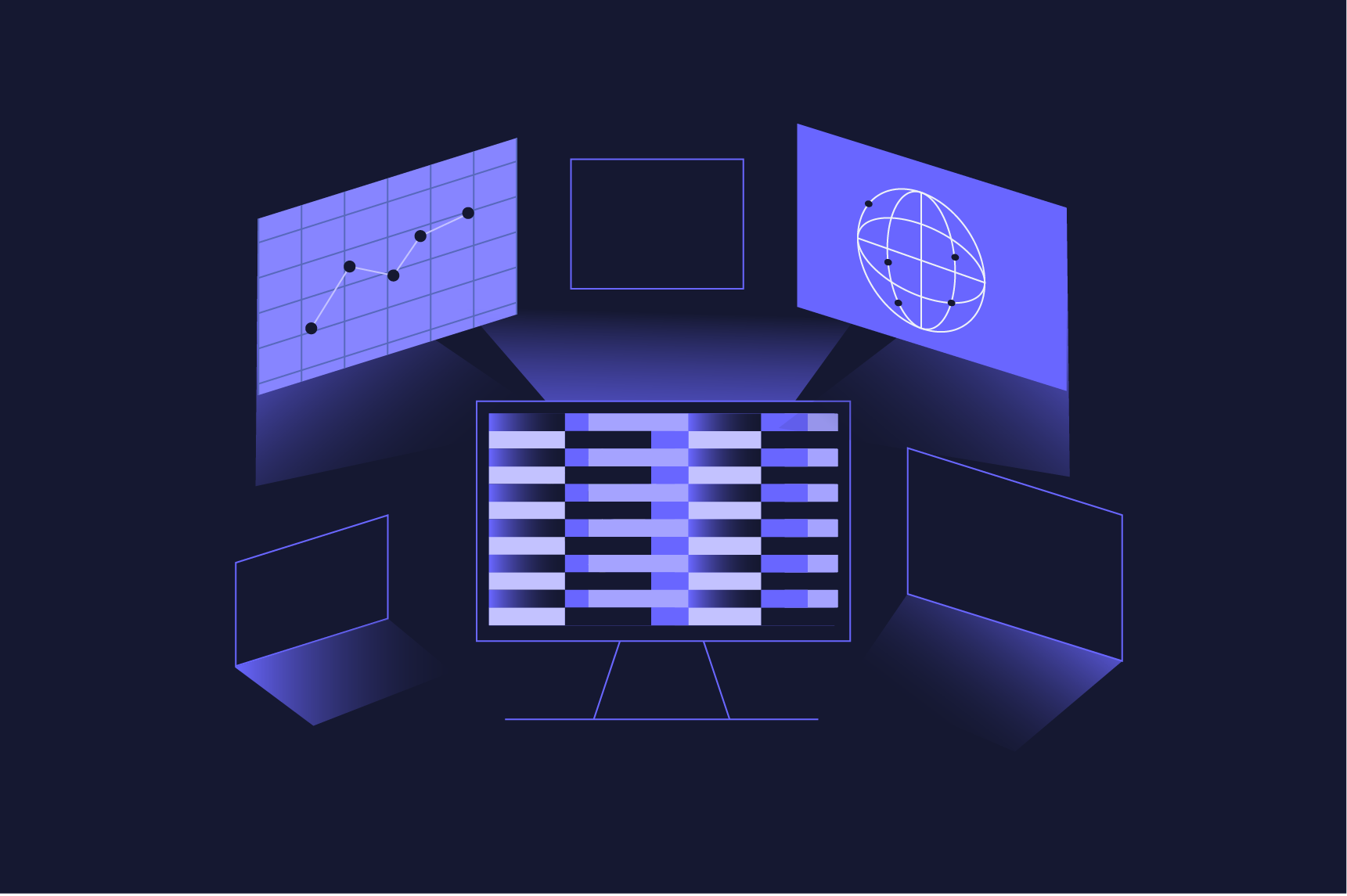Explore the emerging trends and innovations reshaping the future of Security Operations Centers, as they evolve to counter modern cyber threats with greater speed, intelligence and efficiency.
In today's increasingly complex threat landscape, Security Operations Centers (SOCs) represent the frontline defense against sophisticated cyber attacks that target organizations of all sizes. These specialized units have evolved from basic monitoring facilities to advanced defense centers equipped with cutting-edge technologies. What future trends does SOC work hold?
Modern threats volume, velocity and complexity have pushed traditional SOC approaches to their limits, necessitating a fundamental transformation in how security teams detect, analyze and respond to incidents. Recent advancements in automation, orchestration, artificial intelligence (AI) and machine learning (ML) have revolutionized SOC capabilities in processing massive volumes of datasets and executing predictive analysis on collected data and logs.
As attack surfaces expand and adversaries adopt increasingly sophisticated attack techniques, the evolution of SOC capabilities has become not merely advantageous but essential for maintaining effective security postures in a digital ecosystem where threats constantly evolve and adapt. In light of incorporating new AI workflows, how does the workflow change for the analyst?
Future trends in SOC
The landscape of SOC is evolving rapidly due to recent innovations, particularly the significant advances in artificial intelligence technologies. Here are some key developments shaping the future of SOCs.
Automation and orchestration
In cybersecurity, automation refers to the process of using automated tools to streamline security activities, especially repetitive tasks in SOC workflows. For instance, SOC teams are increasingly using specialized security tools and techniques to perform repetitive, rule-based tasks without human intervention. In SOC context, the main areas of automation include:
- Incident response: Using specialized tools to automatically contain cyber threats (e.g., isolating infected endpoint machines, blocking malicious IPs, disabling compromised user accounts within minutes of detection)
- Alert triage: Alert triage is a significant issue in SOC work that typically consumes a considerable amount of time to handle. By using automated tools, SOC teams can filter, prioritize and categorize security alerts to reduce false positives. For example, automated systems can correlate multiple low-severity alerts to identify patterns indicative of advanced persistent threats (APT) that might otherwise go unnoticed by a human observer.
- Log analysis: Parsing and correlating large volumes of log data from various devices such as servers and firewalls, to identify abnormal activities and halt them before they exfiltrate data or spread infection to other network locations. This includes behavioral analysis across network traffic, user authentication attempts, and endpoint activities.
- Patch management: Automatically deploying security patches to vulnerable systems to prevent threat actors from exploiting them. This includes prioritizing critical systems based on exposure and business impact.
By automating these workflows, SOC analysts can dedicate more time to more important tasks such as threat hunting, forensic investigations and handling sophisticated attacks that require human expertise.
A notable advancement in SOC automation is using SOAR (Security Orchestration, Automation, and Response) solutions. SOAR enables the integration of multiple security tools (SIEM, EDR, firewalls, threat intelligence feeds) into a unified system. This achieves numerous benefits to SOC teams, such as:
- Workflow automation: Predefined playbooks enable the execution of response actions when specific triggers are detected. For instance, when a malware signature is identified, the playbook might automatically isolate the affected endpoint, capture RAM memory samples for forensic analysis, and scan other systems for similar indicators. Another example includes automated responses to ransomware detection, where systems can immediately cease network connections, revoke access tokens, and preserve forensic evidence.
- Orchestration: Coordinating different security tools to work together seamlessly. For example, when an IAM system detects a suspicious login, SOAR can simultaneously query the SIEM for historical access patterns, check threat intelligence platforms for known malicious IP addresses, and initiate step-up authentication through the identity provider.
- Improved efficiency: Reducing manual effort and accelerating Mean Time to Detect (MTTD) and Mean Time to Respond (MTTR). A practical illustration is phishing response — rather than manually verifying reported emails, extracting indicators and blocking them across multiple systems, SOAR can perform these actions in seconds, preventing lateral spread. In supply chain compromise scenarios, automated containment can reduce potential impact by hours or even days compared to manual processes.
- Enhanced collaboration: Enabling SOC teams to document, track, and share incident data in a centralized dashboard. This provides complete visibility over the monitored IT environment. During a complex security incident, analysts from different shifts can quickly understand the history of actions taken, view endpoint data captured by first responders, and contribute to the investigation without duplicating efforts, which significantly reduces incident resolution time. This becomes particularly crucial during incidents spanning multiple time zones or requiring specialized expertise across distributed teams.
Integration of AI and ML
AI and ML technologies can radically transform SOC workflows because of their ability to process vast volumes of data (network traffic, logs, user behavior, threat intelligence) at unprecedented speeds. The major benefits SOC analysts can get from leveraging AI in their work include:
First: Threat Detection
- Anomaly detection: ML models can learn baseline behavior (e.g., normal network activity of users) and flag deviations when facing abnormal signs in network traffic (e.g., unusual login times, data exfiltration attempts). For example, an ML system might detect when a marketing employee suddenly accesses engineering databases at 3 AM from an unfamiliar location, which should trigger immediate investigation.
- Pattern recognition: AI identifies known attack signatures (malware, phishing) and zero-day threats by correlating subtle indicators across multiple sources. In practical scenarios, this involves detecting fileless malware execution by recognizing unusual process chains and memory modifications, even when traditional antivirus solutions fail to identify malicious binaries.
- Behavioral analysis:
- UEBA (User and Entity Behavior Analytics): Detects insider threats by monitoring deviations in user activity (e.g., sudden access to sensitive files, attempts to install unauthorized programs). A real-world application would be identifying when a compromised administrator account begins accessing databases it rarely touches, or when an employee downloads unusual volumes of data shortly before their resignation date.
- Network traffic analysis: Identifies malicious communications (e.g., C2 servers, lateral movement). For instance, AI systems can detect beaconing patterns characteristic of command-and-control traffic even when attackers use encrypted channels or timing variations to evade traditional detection.
- Reduced false positives: Unlike rule-based systems, AI enhances accuracy by contextualizing alerts (e.g., distinguishing between legitimate admin actions and compromised accounts). This involves understanding that a developer accessing production databases during a scheduled deployment window is normal, while the same access outside deployment periods warrants investigation, which results in reducing alert fatigue for SOC analysts.
Second: predictive analytics
AI leverages historical and real-time data to forecast cyber risks, this enables organizations to prevent breaches before they occur. Their applications include:
- Threat forecasting:
- Predicts emerging attack vectors (e.g., new phishing tactics) by analyzing trends in global threat data. For example, an AI system might detect a surge in credential theft attempts against competitors and preemptively strengthen authentication requirements for critical systems before the organization becomes a target.
- Estimates the likelihood of vulnerability exploitation (e.g., prioritizing patches for CVEs with active exploit kits). This could involve correlating intel from dark web forums with internal vulnerability scan data to identify which systems require immediate patching.
- Proactive defense:
- Automated hardening: Adjusts security controls (firewall rules, access permissions) based on predicted threats. In practice, this might involve dynamically restricting outbound connections from finance department workstations during tax season when spear phishing campaigns typically increase.
- Attack simulation: AI-driven tools like Breach and Attack Simulation (BAS) test defenses against hypothetical attack scenarios. This enables organizations to validate security controls against the latest TTPs without waiting for actual incidents. For instance, a BAS might simulate a ransomware attack chain involving phishing, privilege escalation, and lateral movement to identify security gaps within the IT environment before real attackers exploit them.
- Risk scoring:
- Assigns risk scores to assets (e.g., servers, user accounts) based on exposure, value, and threat intelligence information. An AI system might determine that an internet-facing server with financial data represents a higher risk than an internally-hosted development server, allowing SOC teams to prioritize monitoring and incident response accordingly. Similarly, executive accounts frequently targeted in whaling attacks might receive enhanced monitoring compared to standard employee accounts.
The future of SOC operations lies at the intersection of human expertise and technological advancement. As threats grow in sophistication, the transformation of SOCs through automation, orchestration and AI capabilities will determine an organization's security resilience. Forward-thinking security leaders must embrace these innovations while keeping security at the forefront. These leaders rely on Silo for efficient and protected workflows.
SOC teams who want to stay up-to-date while focusing the core mission — rapidly identifying, containing and remediating security threats before they impact critical business processes — use Silo: the digital investigations platform. Request a demo.
Tags SOC

